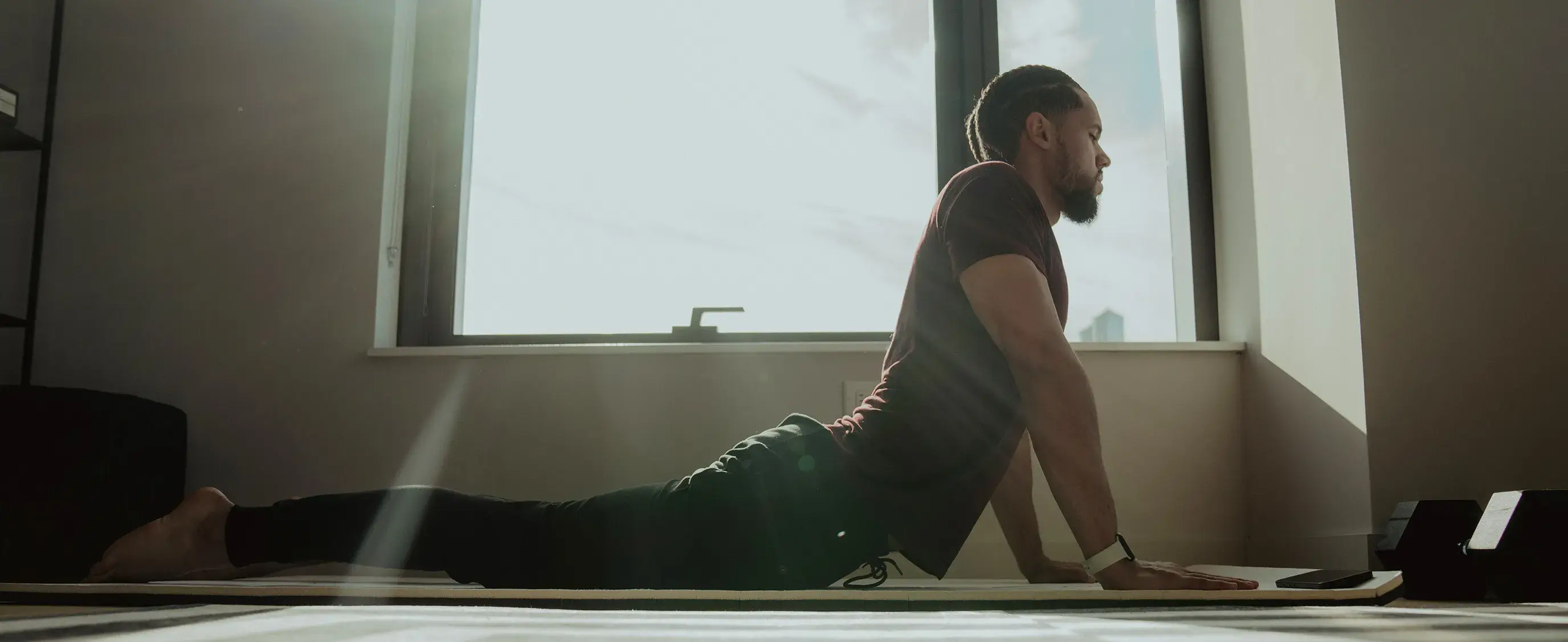When you feel tightness or pain on the outside of your knee, you may have a problem with your IT band. This thick band of tissue that runs down the outside of your leg from your hip to your shin helps stabilize and move your knee, and when it becomes irritated or inflamed, it can cause significant problems for anyone, especially athletes. The good news is that you can treat IT band syndrome with band stretches, strengthening flexibility exercises, and physical therapy. This article will focus on the importance of band stretches for improving flexibility and addressing IT band syndrome. You’ll learn the benefits of band stretches, see specific stretches to try, and discover how Pliability’s mobility app can help you achieve your goals.
Pliability's mobility app can help you reach your stretching goals to improve leg flexibility and strength so you can enjoy your next adventure injury-free.
What is IT Band Syndrome?
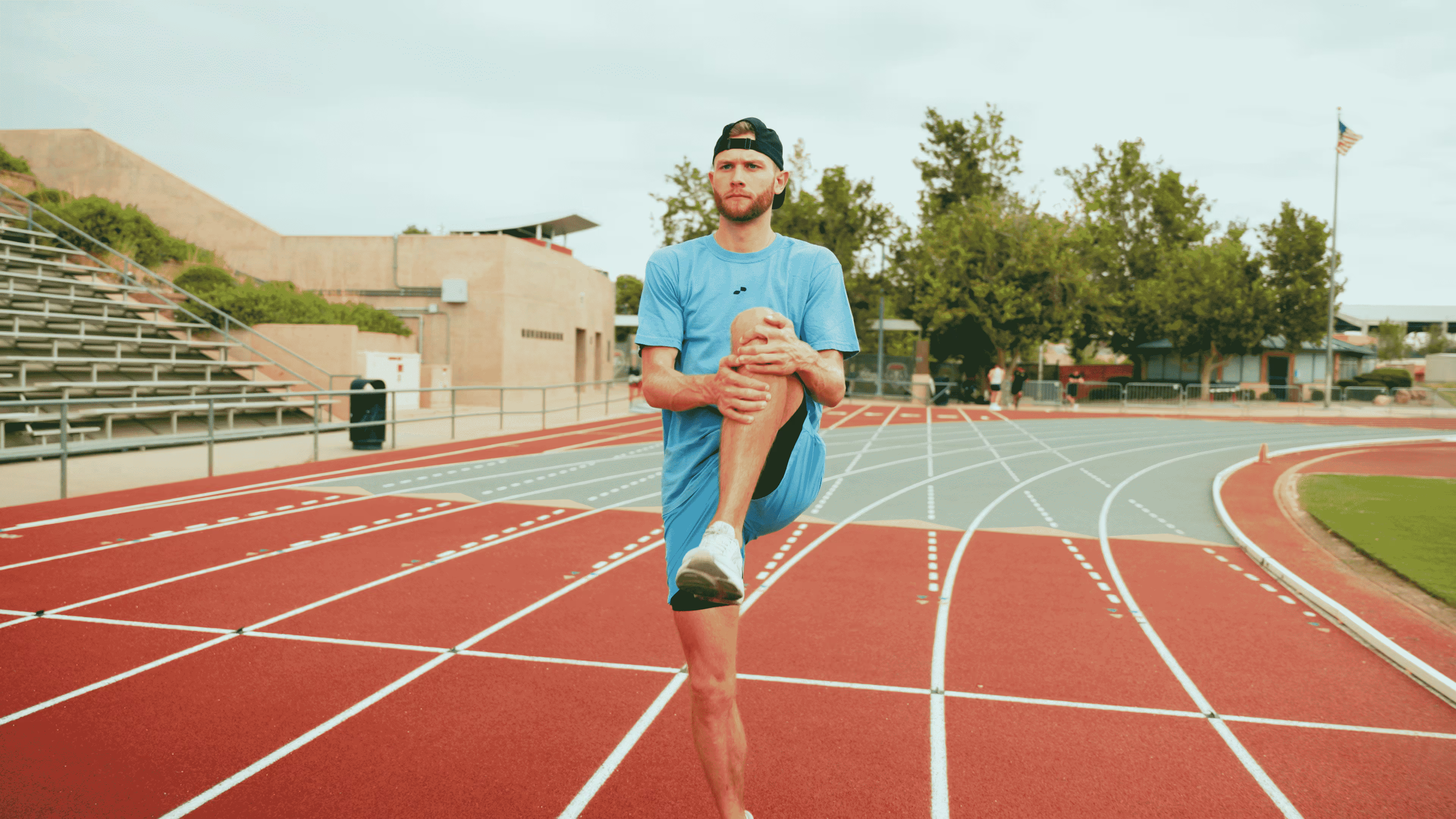
IT band syndrome is a common overuse injury affecting the iliotibial band, or IT band, a thick band of connective tissue running along the outside of the thigh. IT band syndrome can cause swelling and irritation, leading to knee pain, hip tightness, and discomfort during activities like running or cycling.
If you have IT band syndrome, you might notice that your knee hurts when you bend it or feel tightness on the outside of your hip. Repetitive motion, poor biomechanics, and muscle imbalances can all lead to IT band syndrome.
How to Loosen a Tight IT Band
What should you do if your IT band begins barking? Dr. Krampf offers one word: STOP. Continuing the activity that led to the problem isn’t making it disappear. Athletes are at high risk for IT band injuries, like IT band syndrome and “runner’s knee.” That’s because repetitive use of your hips and knees from activities like running, biking, and skating puts much pressure on your IT band. Giving your legs a break can make a big difference.
Here’s why:
“As you bend and extend your knee and hip, the IT band glides over the outside part of the knee. Repeating the motion over and over again slowly works to tighten your IT band,” Dr. Krampf explains. As the tissue grows more taught, friction develops as your IT band begins to rub over your bony infrastructure.
That rubbing leads to irritation and inflammation that can reveal itself as an intense and persistent pain in your knee or hip. Rest is the first step in recovery if your IT band is tight and hurting. You can also apply ice to the aching area and take anti-inflammatory medication (like Advil® or Motrin®). Targeted stretches can also help loosen a tight IT band.
You can try:
- Standing stretches.
- Lying stretches on your back and side.
- Stretches using an exercise band or strap.
- Foam roller techniques.
Related Reading
- Why Is Flexibility Important
- Does Flexibility Increase Speed
- Can Anyone Become Flexible
- Does Stretching Make You More Flexible
- Why Is Flexibility Important for Team Sports
- Increase Back Flexibility
- How Long Does It Take to Get Flexible
- Which Activity Is a Type of Flexibility Exercise?
- Sports That Require Flexibility
- What Is the Best Strategy to Improve Flexibility in Your Legs and Back
- Mobility vs Flexibility
- Sports That Require Flexibility
13 IT Band Stretches for Tight Muscles
-min.jpg)
1. The World's Greatest IT Band Stretches
Want to get a great stretch of your Iliotibial band as it crosses your knee? Then this stretch is for you. Many physical therapists know about it, but not many patients use it. Here is how you do the side-lying IT band stretch:
- Lie on your side with your affected knee on top.
- Bend your top knee and grab your ankle. You should feel a tightness in your quadriceps muscle.
- Pull back a bit and place your bottom foot on the side of your top knee.
- Pull the foot on your knee toward the floor gently, elongating the outer part of your top thigh.
- Feel a stretch in the side of your knee where the IT band crosses the knee.
- Hold the stretch for 15 to 20 seconds and then release.
- Repeat three to five times.
Keep your body still during the stretch; do not rock backward. The more you can keep yourself in a neutral position, the better the IT band stretch.
2. Seated Hip and IT Band Stretches
The seated hip rotation is an excellent IT band stretch while loosening your hip and piriformis.
Here is how you do it:
- Sit with your legs extended out in front of you.
- Cross the involved (hurting) leg over your other leg, bending your knee, and placing your foot flat on the floor.
- Rotate your body to look over the shoulder on the involved side until you feel a stretch.
- Hold for 30 seconds.
- Repeat four times.
3. The Standing IT Band Stretches
Standing IT band stretches are good because you can do them at home, the office, or the gym before working out. You can lean on a wall for balance if it is easier.
Here is how you do it:
- Stand upright.
- Cross the involved (hurting) leg behind the opposite leg.
- Lean to the uninvolved side (away from the sore side) until you feel a stretch across the affected IT band.
- Hold for 30 seconds.
- Uncross your legs and stand up straight again.
- Repeat four times.
Some people feel a stretch in the area of their hip where the IT band arises, while others feel a tightness in their knee during this stretch.
4. Knee to Opposite Shoulder IT Band Stretches
Here is a relaxing stretch to round out your IT band stretching routine:
- Lie on your back.
- Bend the knee of the involved (hurting) leg.
- Grasp behind the bent leg's knee with both hands and pull the involved leg toward the opposite shoulder.
- Hold for 30 seconds.
- Relax your leg.
- Repeat four times.
5. Side-lying Leg Raises
This exercise targets your core, glutes, and hip abductors, which helps improve stability. For more support, bend your bottom leg. For a challenge, use a resistance band around your ankles.
How to do it:
- Lie on your right side with your left hip directly over your right.
- Keep your body straight, pressing your left hand into the floor for support.
- Use your right arm or a pillow to support your head.
- Position your foot so your heel is slightly higher than your toes.
- Slowly raise your left leg.
- Pause here for 2 to 5 seconds.
- Slowly return to the starting position.
- Do 2 to 3 sets of 15 to 20 repetitions on each side.
6. Forward Fold with Crossed Legs
The forward fold stretch helps relieve tension and tightness along your IT band. You’ll feel a stretch along the muscles on the side of your thigh as you do it. Pour all your weight onto your back foot to stretch more deeply.
Use a block or prop under your hands if they don’t reach the floor or if you have any low back pain. If you have concerns with blood coming to your head, keep your back flat and your head raised.
How to do it:
- Stand with your feet hip-distance apart.
- Cross your left foot over your right, aligning your pinkie toes as much as possible.
- Inhale and extend your arms overhead.
- Exhale as you hinge forward from your hips, and lengthen your spine to come into a forward bend.
- Reach your hands toward the floor, and elongate your neck.
- Keep your knees slightly bent.
- Hold this position for up to 1 minute, then do the opposite side.
7. Cow Face Pose
This yoga pose relieves tightness in your glutes, hips, and thighs, improving flexibility and mobility. It also stretches your knees and ankles.
Avoid sinking over to one side. Use a cushion to ground both sitting bones evenly into the floor so your hips are even. To make this pose easier, extend your bottom leg out straight.
How to do it:
- Bend your left knee and position it at the center of your body.
- Draw in your left foot toward your hip.
- Cross your right knee over the left, stacking your knees.
- Place your right heel and ankle to the outside of your left hip.
- Hold this position for up to 1 minute.
- To go deeper, walk your hands forward to fold into a forward bend.
- Hold this position for up to 1 minute, then do the opposite side.
8. Seated Spinal Twist
This stretch relieves tightness in your spine, hips, and outer thighs. It opens your shoulders and chest, allowing for improved posture and stability.
For a more gentle stretch, extend your lower leg out straight. Place a cushion under this knee if your hamstrings are incredibly tight.
How to do it:
- From a seated position on the floor, bend your left leg and place your left foot outside your right hip.
- Bend your right leg and flat your right foot on the floor outside your left thigh.
- Exhale as you twist your lower body to the right.
- Place your left fingertips on the floor, bending your hips.
- Wrap your elbow around your knee, or place your elbow to the outside of your knee with your palm facing forward.
- Gaze over your back shoulder.
- Hold this position for up to 1 minute, then do the opposite side.
9. Foam Roller Stretch
This exercise requires you to have a foam roller. Use it to roll out tension, muscle knots, and tightness around your IT band.
Focus on any areas where you’re experiencing tightness or irritation. Go slowly over these areas.
How to do it:
- Lie on your right side with your upper thigh resting on the foam roller.
- Keep your right leg straight and press the sole of your left foot into the floor for support.
- Place both hands on the floor for stability, or prop yourself up on your right side.
- Foam roll down to your knee before rolling back up to your hip.
- Continue for up to 5 minutes, then do the opposite side.
10. Wall or Chair-supported Stretch
- Choose a spot to stand where your left side is a few inches away from a wall or the back of a chair.
- Stand straight with your feet together.
- Cross your right leg behind your left leg.
- Using a wall or chair for support, lean slightly forward and to the left. You should feel your IT band stretch on your right side.
- Hold for 30 seconds and return to standing.
- Repeat five times.
- Repeat with the wall or chair to the right of your body and your left leg behind your right.
11. Forward-folding IT Stretch
- Start in a standing position with your feet together.
- Cross your right leg over your left leg, setting your right foot down flat on the outside of your left foot.
- Reach down toward your feet. Bend as far as is comfortable to get a good stretch but not hurt.
- Breathe deeply as you hold for 30 seconds.
- Repeat with the left foot in front.
- Repeat five times.
12. Strap IT Band Stretch
- Lie on your back with your legs straight.
- Loop an exercise strap, resistance band or belt around your right foot.
- Lift your right leg up straight before bringing it across your body (to the left) while keeping your hips flat. You should feel a gentle stretch along your right outer thigh.
- Hold for 30 seconds.
- Repeat with your left foot.
- Repeat five times.
13. Back-lying IT Band Stretch
- Lie on your back with your knees bent 90 degrees.
- Lift your right leg so your right ankle hooks around your left knee.
- Stretch both legs down toward the ground to the right. Hold for 30 seconds.
- Repeat with your left ankle over your right knee, pulling your legs to the left.
- Repeat five times.
Related Reading
- Why Is It Important for Athletes to Be Flexible
- Flexibility Sports Examples
- How Many Days Per Week Can You Perform Flexibility Exercises?
- How to Become Flexible if You Are Very Stiff
- Flexibility Exercises for Kids
- Flexibility Exercises at Home
- How Can Flexibility Training Reduce the Risk of Back Pain?
- Flexibility Exercises for Beginners
- How Frequently Should Flexibility Exercises Be Performed for Best Results?
- Benefits of Flexibility
- Flexibility Workout Plan
- Types of Flexibility Exercises
- Back Stretches for Flexibility
- Strength and Flexibility Training
- Exercises for Lower Back Pain
- How to Stretch Quads
- Morning Stretch
- Best Quad Stretches
- At What Average Age Does Flexibility Start to Diminish for Most People?
- IT Band Stretches
- IT Band Stretch
- IT Band Exercises
- Inner Thigh Stretches
- Cool Down Stretches
- Standing Quad Stretch
How Long Does IT Band Syndrome Typically Take To Heal?

Healing time varies based on the severity of the condition and the effectiveness of treatment. Iliotibial band friction syndrome can take 4 to 8 weeks to heal completely. During this time, focus on healing your entire body. Avoid any other activities that cause pain or discomfort to this area of your body.
Stretching is Just One Component of Rehabilitation
Stretching your ITB and the muscles around it may be just one component of your rehab program for iliotibial band friction syndrome. For example, stretching the tensor fasciae latae (TFL) and gluteus maximus may provide relief. Both the TFL and gluteus maximus attach to the IT band. When these muscles improve flexibility, tension is reduced in the IT band.
Foam Rolling Improves Recovery
Increasingly, physical therapists and personal trainers recommend using foam rollers during stretching exercises to relieve pain, improve flexibility, and hasten muscle recovery.
Strengthening Exercises and Balance Work Are Also Beneficial
Many people with ITBS also benefit from strengthening their glutes, strengthening their hip muscles, and working to improve balance and running mechanics. Your PT can help you determine the best overall program for your ITBS and get you back to your normal activity level quickly and safely.
Addressing the Root Cause of IT Band Pain
If your IT band continues to ache, Dr. Krampf suggests working with a physical therapist to find and address potential causes, like:
- Differences in right and left leg length.
- Muscle weakness in your hips, glutes or core that affects proper gait mechanics
- Ill-fitting shoes.
Something as simple as running the same route every day could even be a factor combined with overuse, Dr. Krampf notes. But the bottom line is that any endurance athlete should always make their IT bands a focus.
Make IT Band Stretches Part of Your Routine
“If you’re someone who runs or cycles a lot, pay attention to them and do your stretches,” Dr. Krampf advises. “Don’t wait to address your IT bands until they’re a problem. Make IT band stretches part of your routine.”
Improve Your Flexibility with Our Mobility App Today | Get 7 Days for Free on Any Platform
Flexibility training has long been associated with yoga and static stretching, but Pliability is changing the game by offering a fresh approach to improving mobility. Pliability is an app with a vast library of high-quality videos designed to improve flexibility, aid recovery, reduce pain, and enhance range of motion.
Personalized Mobility
Pliability provides daily-updated custom mobility programs for those interested in optimizing their health and fitness. It also includes a unique body-scanning feature to pinpoint mobility issues. If you're feeling limited by pain or your ability to move, Pliability aims to complement your fitness routine and help you move better.
Sign up today for 7 days absolutely for free, on iPhone, iPad, Android or on our website to improve flexibility, aid recovery, reduce pain, and enhance range of motion with our mobility app.
Related Reading
- Leg Flexibility Exercises
- Muscular Flexibility Exercises
- Pliability vs Flexibility
- Flexibility Workout
- Flexibility Routine
- Best Stretches for Flexibility
- Best Flexibility Apps
- StretchIt vs Pliability
- Bend vs Stretchit
- Stretches for Sore Legs
- Side Stretches
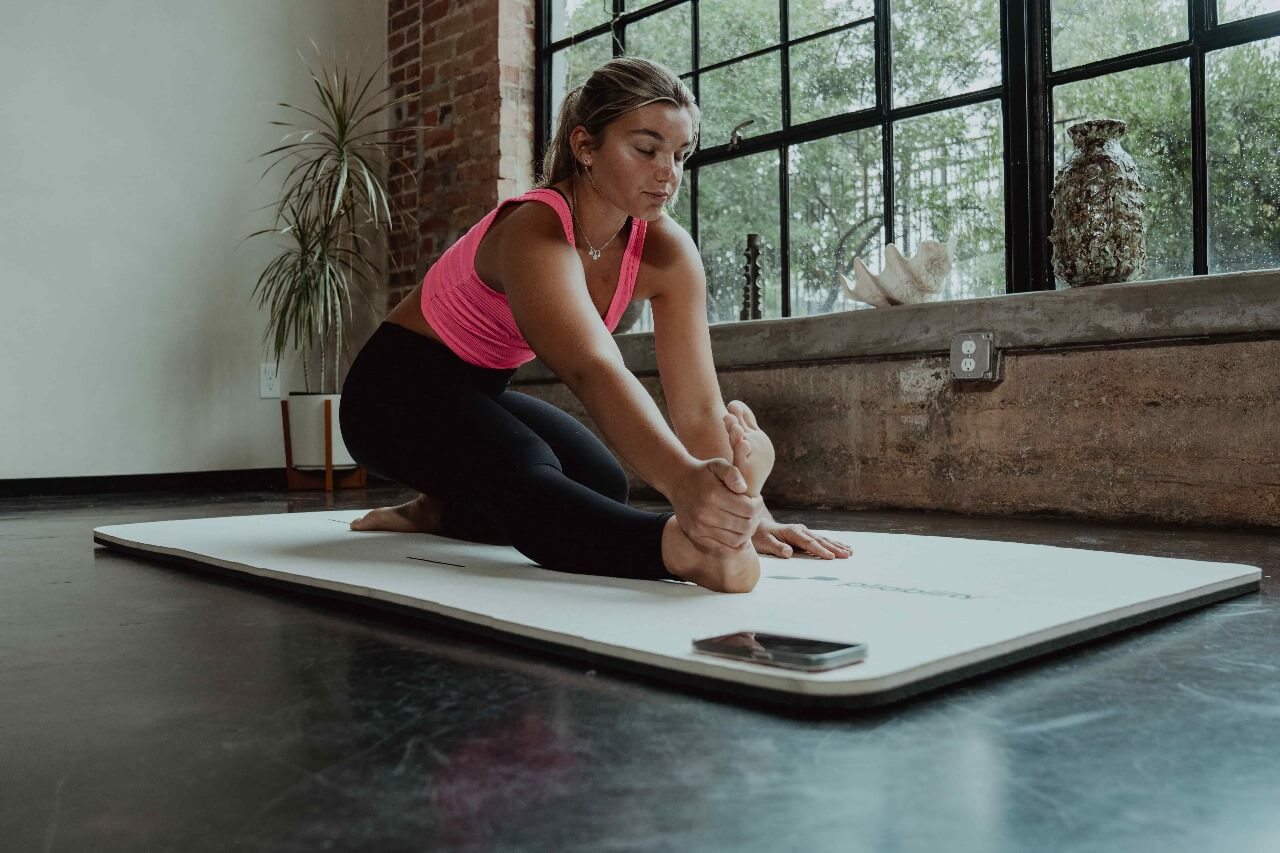
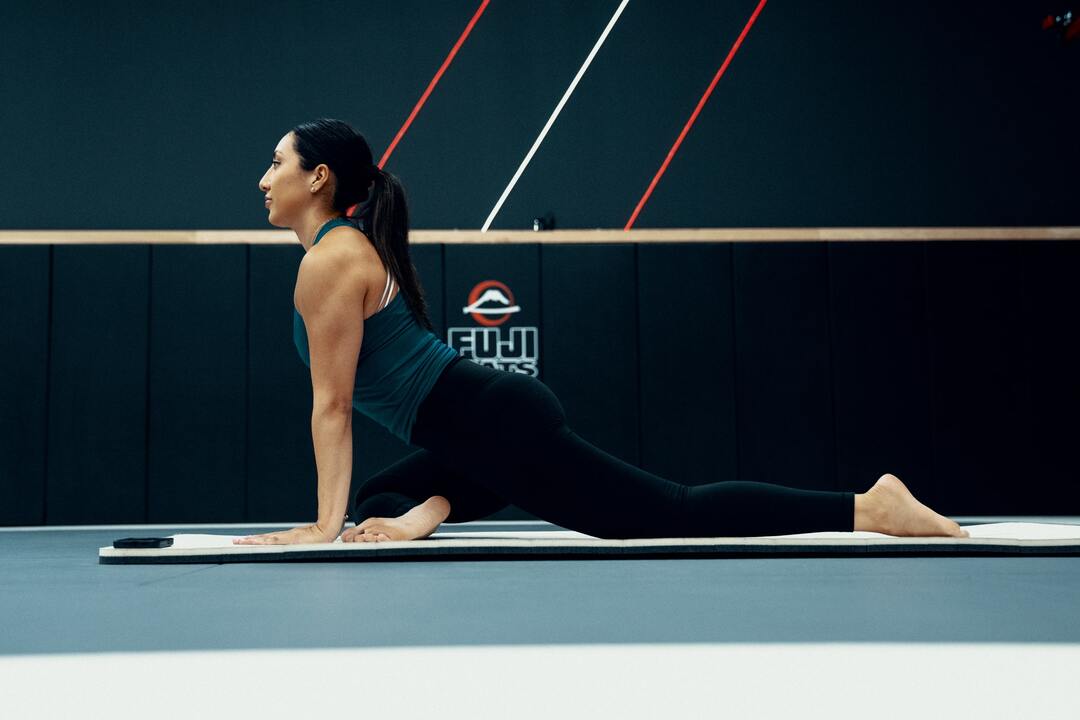

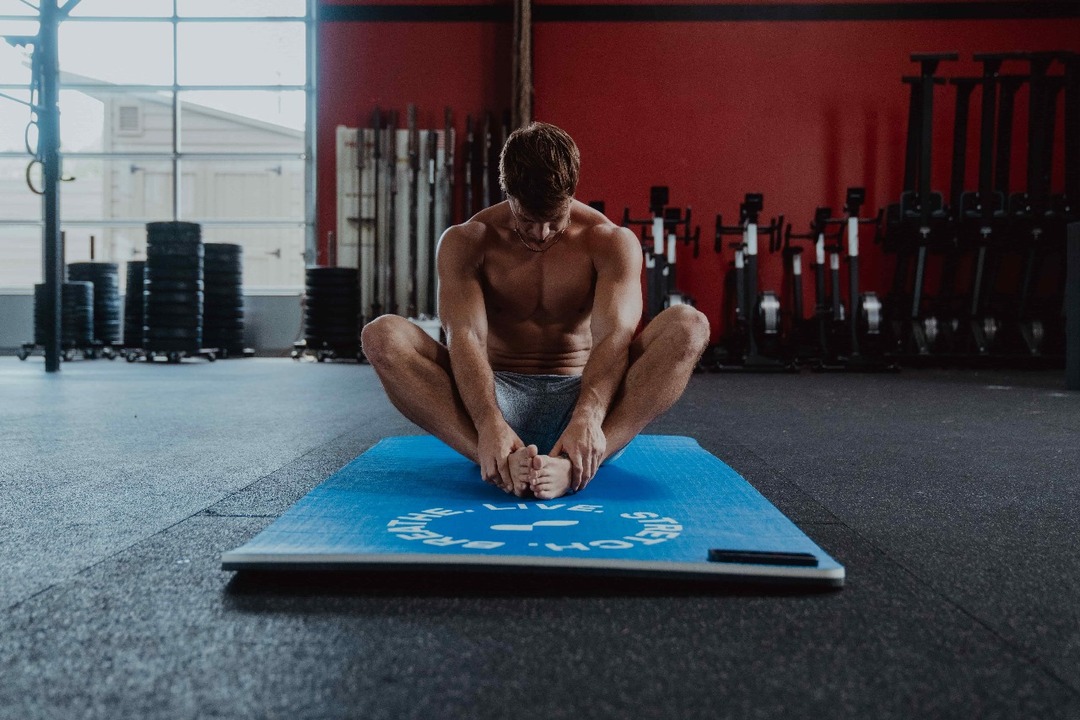

.jpg)
